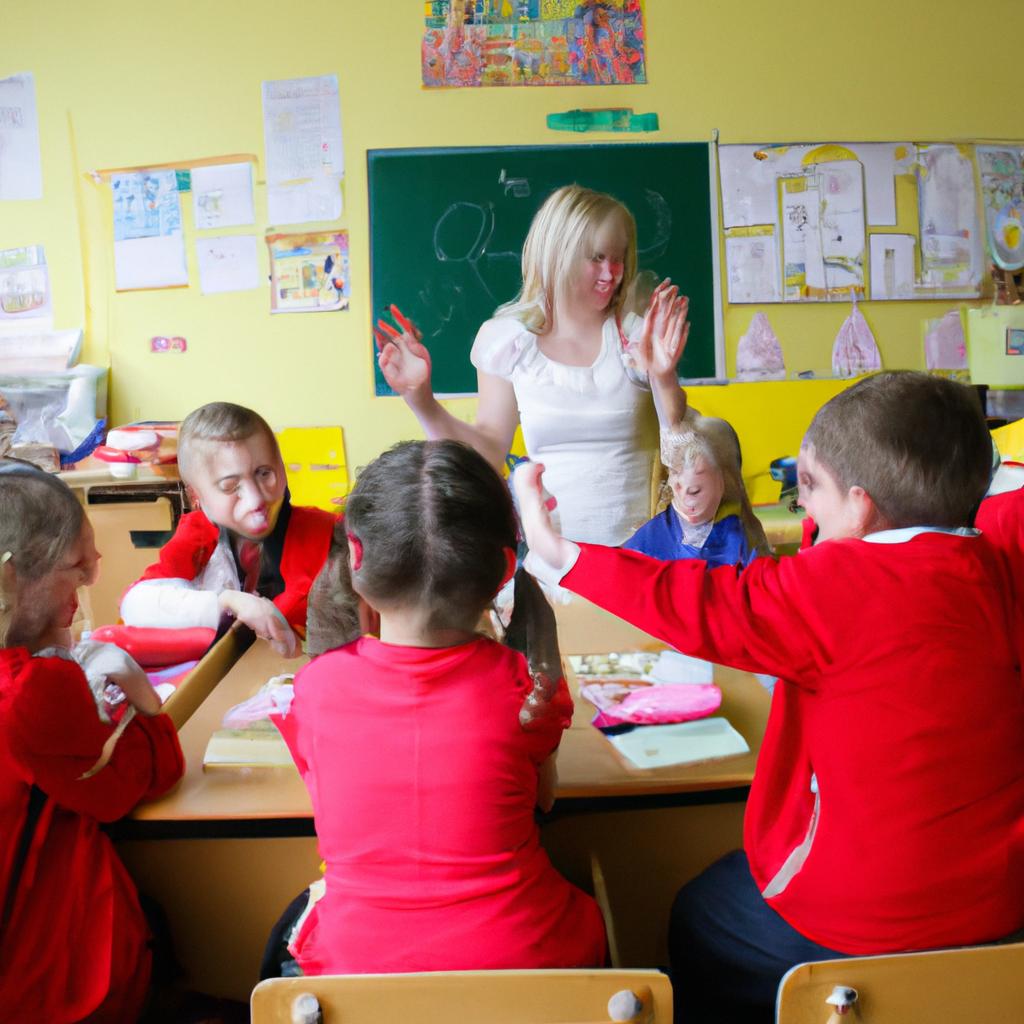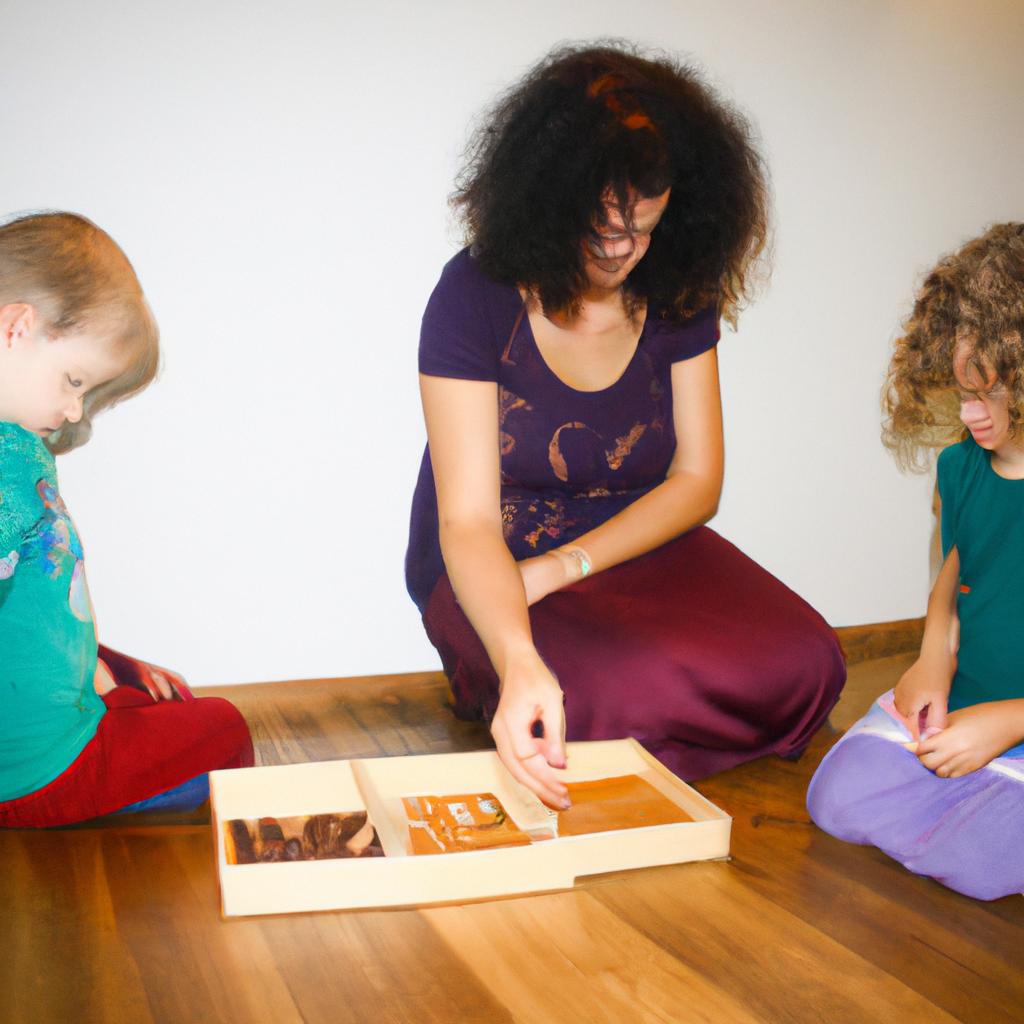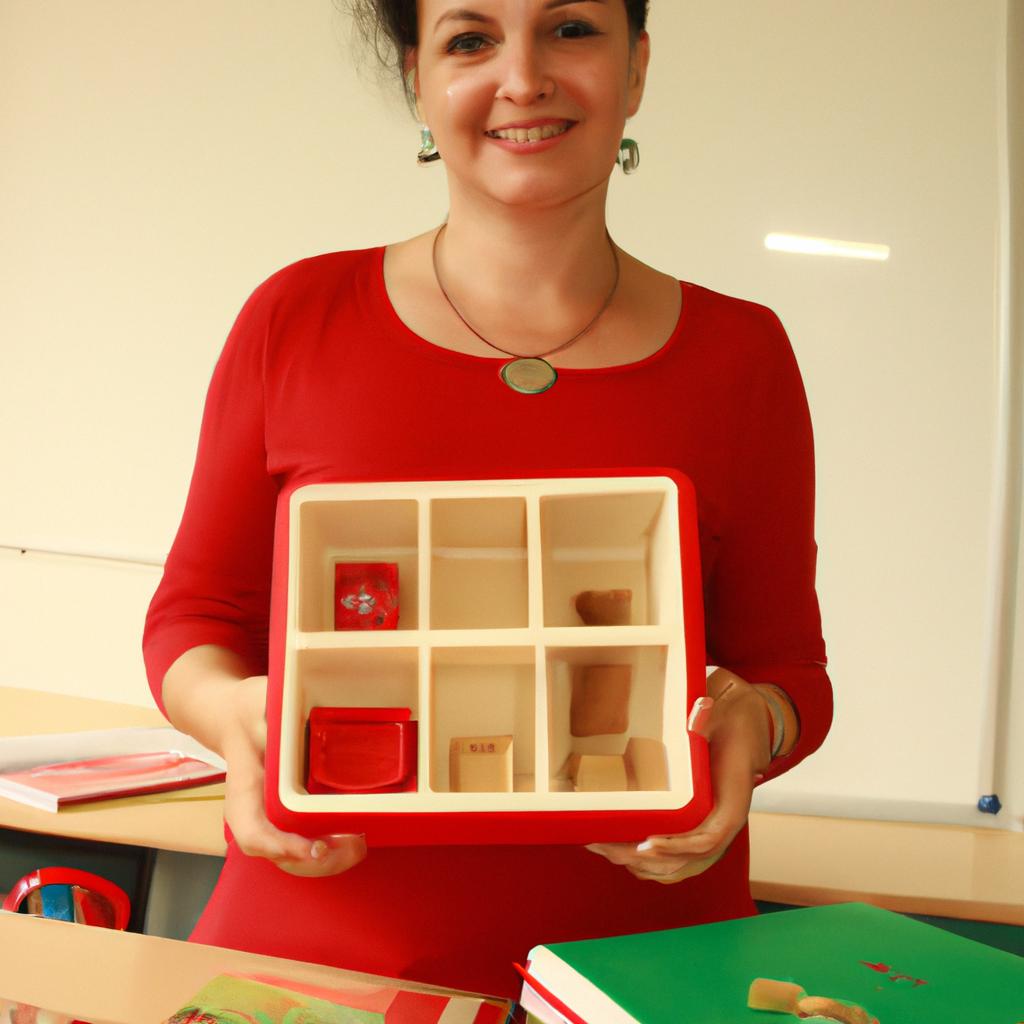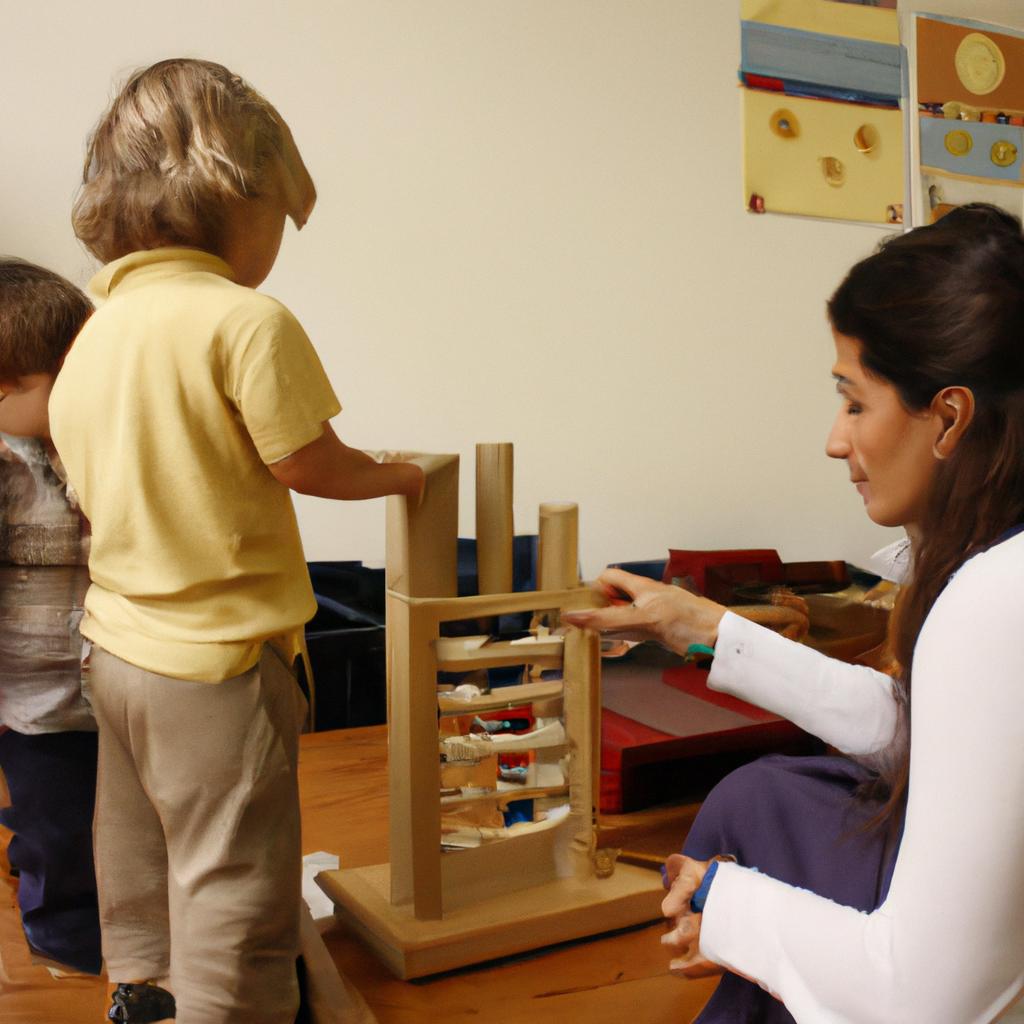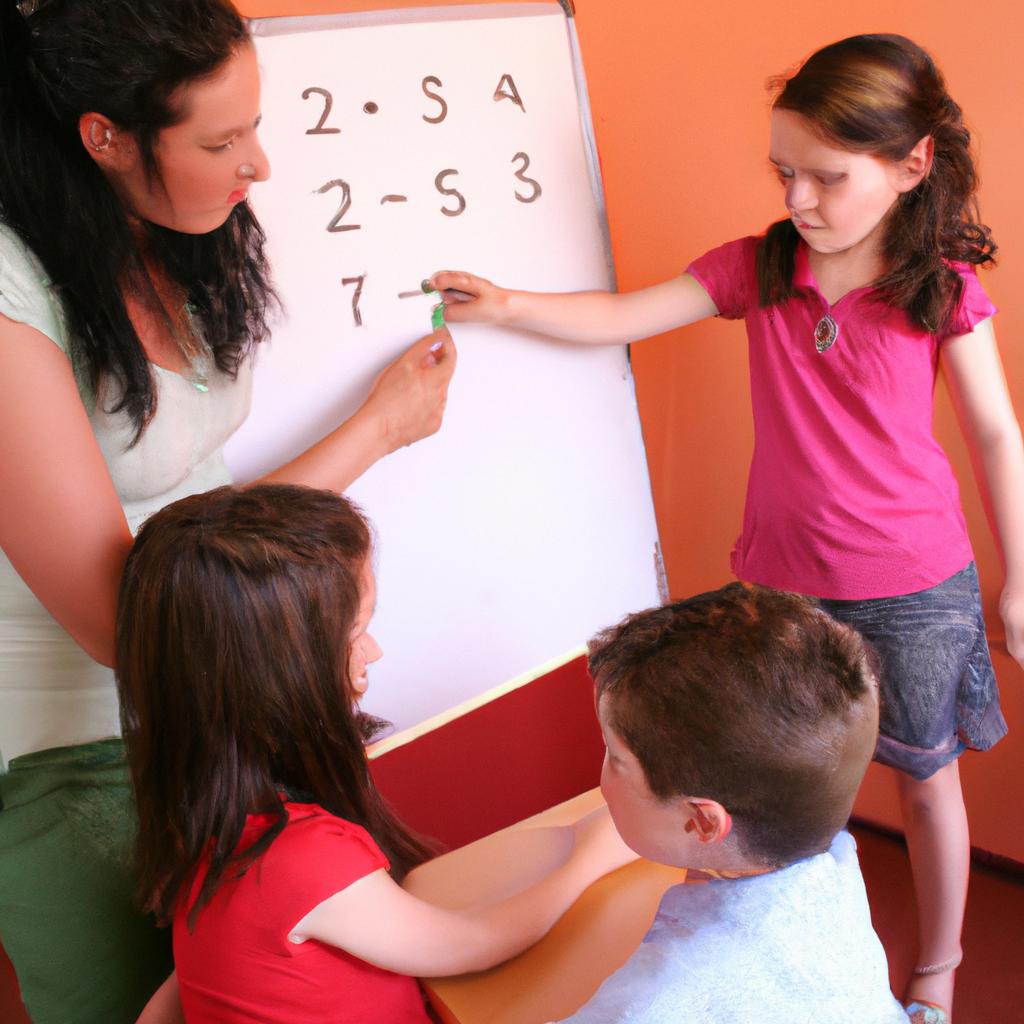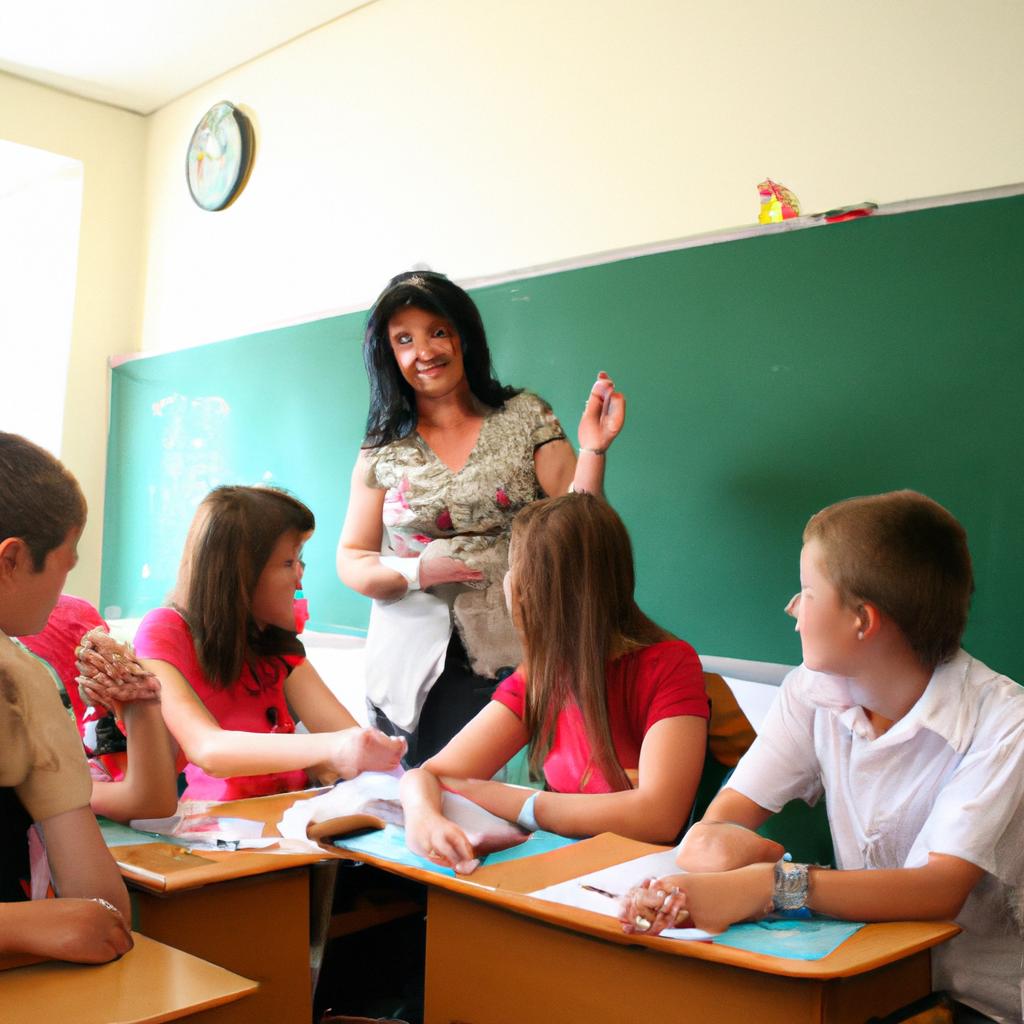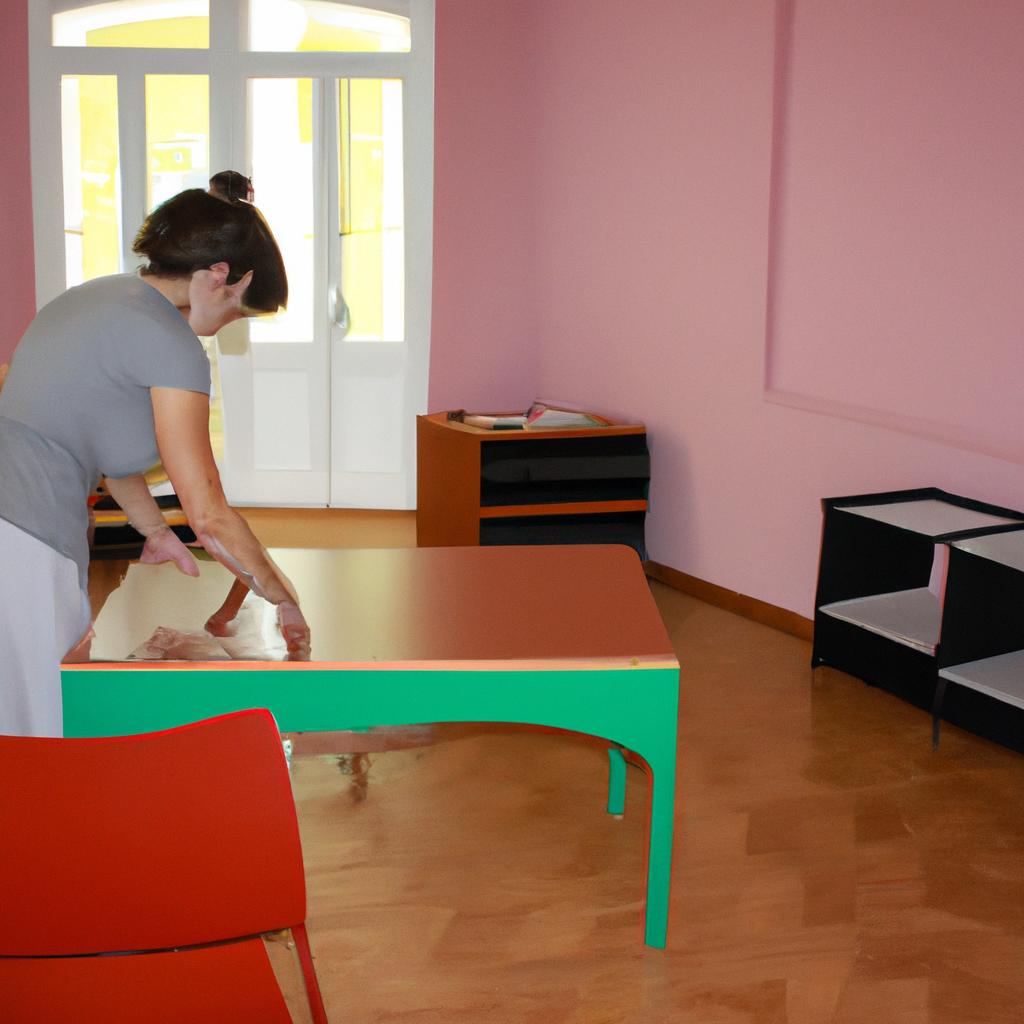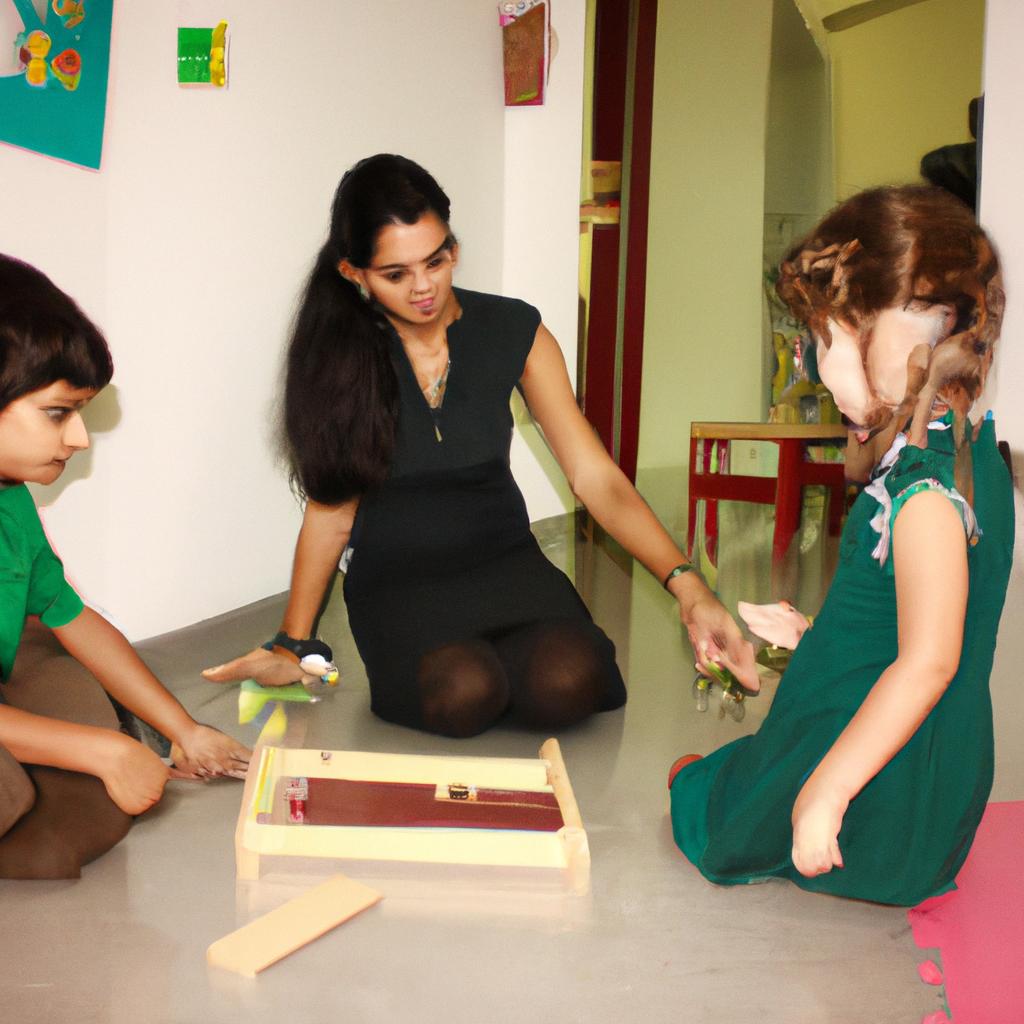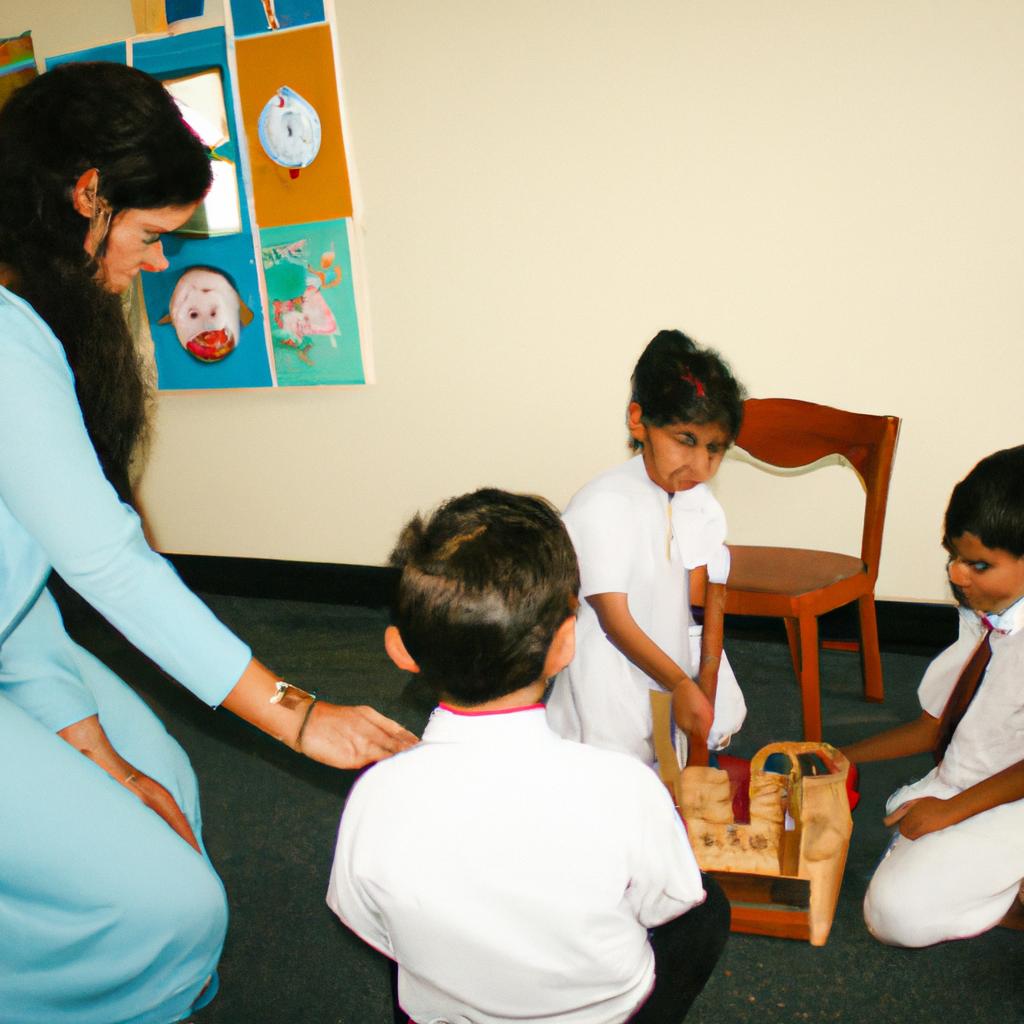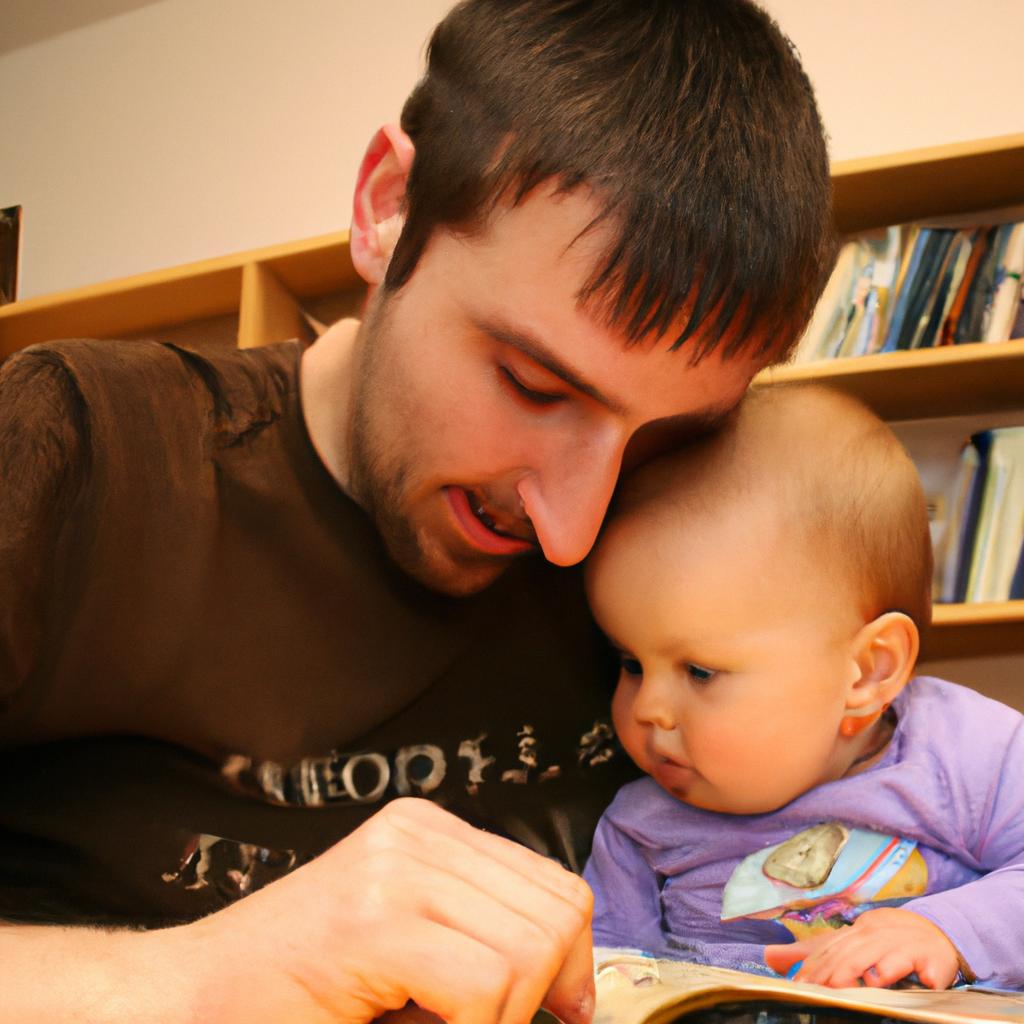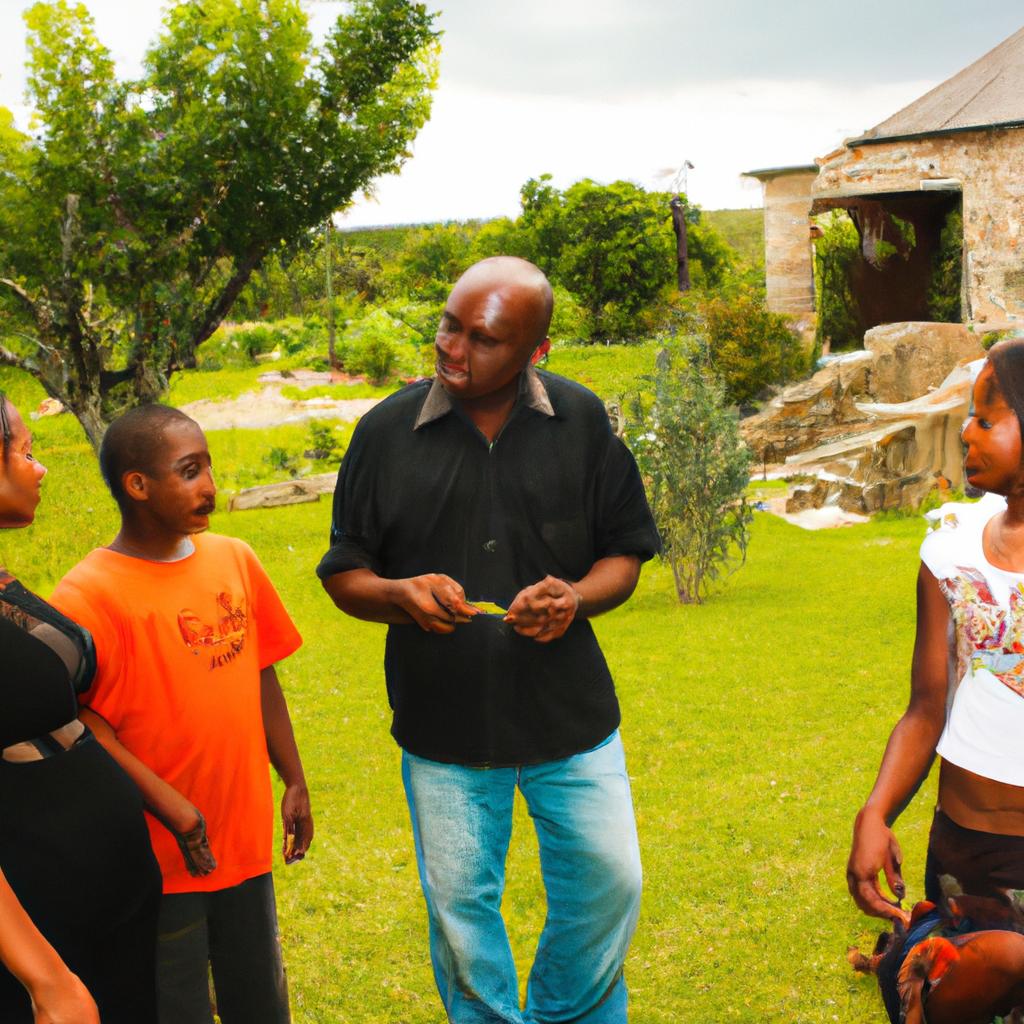Exploring Cultural Materials: Montessori School and Curriculum
In today’s increasingly diverse world, it is crucial for educational institutions to provide students with a comprehensive understanding and appreciation of different cultures. One approach that has gained recognition in recent years is the implementation of cultural materials within the Montessori curriculum. By utilizing a wide range of materials representing various aspects of different cultures, Montessori schools aim to foster an environment where children can explore and understand diverse perspectives.
For instance, imagine a hypothetical scenario in which a child at a Montessori school encounters cultural materials related to Japan. Through engaging with these materials such as origami paper and traditional clothing replicas, the child not only gains knowledge about Japanese culture but also develops respect and empathy towards people from this background. This example demonstrates how incorporating cultural materials into the Montessori curriculum offers an opportunity for students to go beyond surface-level learning and engage in meaningful exploration of different traditions, values, and beliefs.
The Philosophy of Maria Montessori
Maria Montessori, an Italian physician and educator, developed a unique educational approach that has influenced the field of education for over a century. Her philosophy is grounded in the belief that children are naturally curious and have an innate desire to learn. By creating an environment that fosters independence and self-directed learning, Montessori schools aim to empower students to reach their full potential.
To understand the impact of Montessori’s philosophy, let us consider a hypothetical example. Imagine a young child named Emily who attends a Montessori school. In her classroom, Emily is encouraged to choose her own activities from a carefully prepared set of materials. She selects a puzzle and begins working on it independently. As she explores the puzzle pieces, she learns about shapes, sizes, and spatial relationships. With guidance from her teacher, Emily develops problem-solving skills and gains confidence in her abilities.
Montessori education encompasses several key principles:
- Child-centered approach: The focus is on meeting each child’s individual needs by recognizing their unique interests and capabilities.
- Prepared environment: Classrooms are meticulously arranged with purposeful materials that promote exploration, discovery, and independent learning.
- Self-correction: Materials are designed to provide immediate feedback so that children can correct their mistakes without relying on adult intervention.
- Mixed-age classrooms: Students of different ages work together in one classroom, allowing younger children to learn from older peers while older students reinforce their knowledge through teaching.
Through these principles, Montessori education creates an emotionally engaging learning experience for children as they actively participate in their own development. To illustrate this further:
| Emotion | Example |
|---|---|
| Curiosity | Children eagerly explore various hands-on materials |
| Confidence | Students gain self-confidence through independent decision-making |
| Independence | Learners develop autonomy as they engage in self-directed tasks |
| Collaboration | Older students mentor younger ones, fostering a sense of community |
In considering the philosophy of Maria Montessori, it is evident that her approach to education emphasizes the importance of nurturing children’s natural curiosity and encouraging their independence. This sets the stage for our exploration of the key components of Montessori education.
Transitioning into the subsequent section on “Key Components of Montessori Education,” we delve deeper into how these principles manifest in practice.
Key Components of Montessori Education
Exploring Cultural Materials: Montessori School and Curriculum
The Philosophy of Maria Montessori has laid the foundation for a unique approach to education that focuses on fostering independence, self-discovery, and cultural awareness. To truly understand the implementation of this philosophy in practice, it is essential to explore the key components of Montessori education.
One example that exemplifies the principles of Montessori education is a case study conducted in a Montessori classroom. In this study, students were given freedom within limits to choose their activities based on their interests and developmental needs. They had access to carefully designed learning materials that facilitated hands-on exploration and independent learning. The teacher acted as a guide rather than an instructor, observing each child’s progress and providing individualized support when needed.
A powerful aspect of Montessori education lies in its use of cultural materials. These materials are specifically designed to spark curiosity about various cultures and promote global understanding among children. Here are some ways in which these materials contribute to the holistic development of young learners:
- Cultural Diversity: By introducing children to diverse cultures through artifacts, maps, books, and music from around the world, they develop an appreciation for different customs, traditions, languages, and perspectives.
- Sensory Exploration: Many cultural materials provide tactile experiences by incorporating textures or allowing children to handle objects representative of different cultures. This sensory engagement enhances their cognitive development while fostering cross-cultural empathy.
- Language Development: Cultural materials often include language cards with words translated into multiple languages. This exposure not only promotes bilingualism but also encourages communication skills across language barriers.
- Global Citizenship: Through exploring cultural diversity at an early age, children develop a sense of global citizenship – recognizing their place in the world community and accepting responsibility towards creating a harmonious future.
To further illustrate how these cultural materials enhance experiential learning in Montessori classrooms, consider the following table showcasing examples of common cultural materials used:
| Cultural Material | Purpose |
|---|---|
| World Map | Understanding geography and continents |
| Multicultural Books | Encouraging reading diversity and empathy |
| Traditional Musical Instruments | Experiencing different sounds and rhythms |
| Artifacts from Various Cultures | Promoting cultural awareness and appreciation |
As we delve deeper into the role of cultural materials in Montessori curriculum, it becomes evident that these resources serve as catalysts for fostering a global mindset among young learners. By actively engaging with diverse cultures through hands-on experiences, children develop an understanding and respect for the world around them. This sets the stage for their continued exploration of cultural topics in the subsequent section on “Role of Cultural Materials in Montessori Curriculum.”
Role of Cultural Materials in Montessori Curriculum
Having established the key components that define a Montessori education, we now delve into the crucial role played by cultural materials within the Montessori curriculum. By incorporating these materials, educators provide students with opportunities to explore various aspects of culture, fostering their understanding and appreciation for diversity.
Role of Cultural Materials in Montessori Curriculum:
Cultural materials are an integral part of the Montessori approach, serving as valuable tools for learning and exploration. These materials are carefully selected to expose children to different cultures, traditions, languages, and geography. For instance, imagine a classroom where young learners engage with a set of beautifully illustrated picture cards depicting landmarks from around the world. Through this activity, children can develop their geographical knowledge while also igniting curiosity about diverse cultures beyond their own.
To further emphasize the significance of cultural materials in the Montessori curriculum, let us consider some specific benefits they offer:
- Sensory Development: Many cultural materials involve tactile elements such as textured maps or replicas of artifacts. Manipulating these objects not only enhances fine motor skills but also stimulates sensory perception.
- Critical Thinking Skills: Engaging with cultural materials encourages students to ask questions and think critically about what they observe. They learn how to compare and contrast different aspects of culture, developing analytical thinking abilities.
- Empathy and Understanding: By exploring other cultures through these materials, children gain empathy and respect for diversity. They begin recognizing similarities and appreciating differences among people from varied backgrounds.
- Cultivating Curiosity: The use of culturally rich resources sparks curiosity among students. It motivates them to explore topics independently outside structured lessons, promoting lifelong learning.
Table showcasing examples of popular cultural materials used in Montessori classrooms:
| Materials | Purpose | Examples |
|---|---|---|
| Cultural Picture Cards | Introduce landmarks, people, and cultural artifacts from around the world | Landmarks of Europe, Traditional Clothing |
| Continent Puzzles | Develop geographical knowledge and enhance fine motor skills | North America Puzzle, Asia Puzzle |
| Language Cards | Encourage language development by introducing foreign words and phrases | Spanish Vocabulary Cards, French Phrases |
| Cultural Artifacts | Allow hands-on exploration of historical or traditional objects | Ancient Egyptian Relics, Native American Pottery |
Incorporating these diverse materials into the Montessori curriculum cultivates an inclusive learning environment that fosters appreciation for different cultures. By offering children opportunities to engage with various aspects of culture through tactile experiences, critical thinking is nurtured while empathy and curiosity are ignited.
Understanding the role of cultural materials in the Montessori curriculum provides a foundation for exploring their numerous benefits. In the following section, we will delve deeper into how incorporating these materials enhances students’ overall educational experience and personal growth.
Benefits of Incorporating Cultural Materials in Montessori Education
Exploring the Role of Cultural Materials in Montessori Education
The incorporation of cultural materials plays a vital role in the Montessori curriculum, providing students with opportunities to explore and understand diverse cultures, traditions, and perspectives. These materials serve as educational tools that not only enhance academic learning but also foster social-emotional development and promote global awareness. To illustrate this point, let us consider the case study of a Montessori classroom where cultural materials are extensively utilized.
In this hypothetical scenario, a Montessori teacher introduces a set of cultural materials focused on ancient civilizations. The students engage in hands-on activities such as building pyramids using blocks, examining replicas of artifacts from different cultures, and reading historical fiction books related to ancient civilizations. Through these experiences, children develop an appreciation for history while simultaneously honing their motor skills, critical thinking abilities, and creativity.
The benefits associated with incorporating cultural materials into the Montessori education extend beyond academic growth. Here are four key advantages:
- Promotes multicultural understanding: By introducing cultural materials representing various ethnicities and customs, children gain insight into different ways of life around the world. This exposure fosters empathy, respect for diversity, and an open-minded attitude towards unfamiliar cultures.
- Enhances cognitive development: Cultural materials stimulate curiosity and encourage independent exploration, promoting higher-order thinking skills such as analysis, synthesis, and evaluation. As children engage with these resources independently or cooperatively with peers, they cultivate problem-solving abilities and expand their knowledge base.
- Nurtures social-emotional development: Learning about different cultures helps children recognize similarities among humans while appreciating individual differences. This understanding cultivates compassion and empathy towards others who may have different backgrounds or beliefs.
- Fosters global citizenship: Incorporating cultural materials develops global awareness by instilling a sense of responsibility towards our interconnected world. Children learn about environmental conservation efforts across cultures or discuss current global issues like climate change—preparing them to become informed and active global citizens.
To further illustrate the significance of cultural materials, we present a table highlighting some examples commonly found in Montessori classrooms:
| Cultural Material | Purpose | Example |
|---|---|---|
| Maps and Globes | Develops spatial orientation skills | Children explore different continents and countries using globes |
| Traditional Clothing | Promotes understanding of diverse cultures | Students dress up in traditional attire from various regions |
| Musical Instruments | Encourages exploration of music from different cultures | Children learn to play instruments like drums or xylophones |
| Flags | Enhances knowledge of national symbols | Students identify flags and associate them with respective nations |
As we have seen, incorporating cultural materials into the Montessori curriculum has numerous benefits that extend beyond academic learning. By nurturing multicultural understanding, enhancing cognitive development, fostering social-emotional growth, and promoting global citizenship, these materials encourage children to engage actively with diverse perspectives. In the subsequent section about “Examples of Cultural Materials Used in Montessori Classrooms,” we will delve deeper into specific resources employed within such educational settings.
Examples of Cultural Materials Used in Montessori Classrooms
Now, let us delve deeper into the examples of cultural materials used in Montessori classrooms. One such example is the continent puzzle map, which allows children to explore and understand the different continents’ shapes, sizes, and locations. By manipulating these puzzles, students develop spatial awareness and gain knowledge about various countries and cultures around the world.
In addition to the continent puzzle maps, there are other cultural materials that enhance a child’s understanding of geography and culture. These include:
- Flag cards: Showcasing flags from different nations helps children recognize national symbols and identify countries by their respective flags.
- Traditional clothing sets: Dress-up materials representing traditional costumes from diverse cultures provide an opportunity for children to learn about various ethnicities and customs.
- Food replicas: Replicas of food items from different cuisines expose students to global culinary traditions while promoting multicultural appreciation.
- Musical instruments: Having access to a range of musical instruments introduces children to different sounds, rhythms, and melodies associated with various cultures worldwide.
By incorporating these cultural materials into the classroom environment, Montessori educators can create a dynamic setting where children naturally engage with diverse aspects of global culture.
| Material | Purpose | Emotional Response |
|---|---|---|
| Continent Puzzle Maps | Encourage geographical exploration | Sense of adventure |
| Flag Cards | Promote identification skills | Pride in recognizing flags |
| Traditional Clothing | Foster curiosity towards different cultural practices | Appreciation for diversity |
| Food Replicas | Explore international cuisine | Excitement for new tastes |
As we can see from these examples, offering culturally relevant materials increases students’ engagement and promotes empathy towards people from different backgrounds. By creating an inclusive learning environment that celebrates diversity, Montessori education cultivates respect for all cultures among its young learners.
Transitioning into our next section on “Tips for Creating a Culturally Enriched Montessori Environment,” let us explore how educators can maximize the potential of these materials to foster cultural understanding and appreciation.
Tips for Creating a Culturally Enriched Montessori Environment
Exploring Cultural Materials: Montessori School and Curriculum
Examples of Cultural Materials Used in Montessori Classrooms
In the previous section, we discussed the various cultural materials that are commonly used in Montessori classrooms. These materials play a crucial role in fostering cultural awareness and understanding among students. Now, let us delve deeper into how these materials can be effectively utilized to create a culturally enriched learning environment.
One example of integrating cultural materials is through the use of a case study. Imagine a Montessori classroom where children are studying different countries around the world. They are provided with hands-on materials such as maps, globes, and flags representing each country. By exploring these materials, students not only gain knowledge about geographical locations but also develop an appreciation for diverse cultures and traditions.
To further enhance this immersive experience, educators can incorporate emotional elements into their teaching methods. Here is a bullet point list showcasing four ways to evoke an emotional response from students:
- Engage students in interactive discussions about cultural differences.
- Encourage them to share personal stories or experiences related to different cultures.
- Organize field trips to museums or cultural events.
- Invite guest speakers from various backgrounds to talk about their customs and traditions.
Furthermore, utilizing visual aids like tables can visually represent information while capturing attention. The table below illustrates some key aspects of incorporating cultural materials into the Montessori curriculum:
| Aspect | Benefits | Challenges |
|---|---|---|
| Diversity | Promotes acceptance | Requires updating resources regularly |
| Inclusivity | Fosters empathy | May require additional training |
| Authenticity | Provides accurate representation | Can be time-consuming |
| Engagement | Enhances student interest | Requires careful selection |
By embracing these strategies and approaches within the Montessori framework, educators can create an inclusive and engaging environment that encourages students to embrace diversity and appreciate different cultures. This holistic approach not only enriches their educational experience but also equips them with the tools needed to thrive in an increasingly multicultural world.
Incorporating cultural materials is just one aspect of creating a culturally enriched Montessori environment. In the following section, we will explore additional tips and strategies that educators can employ to further enhance this learning experience for students.

